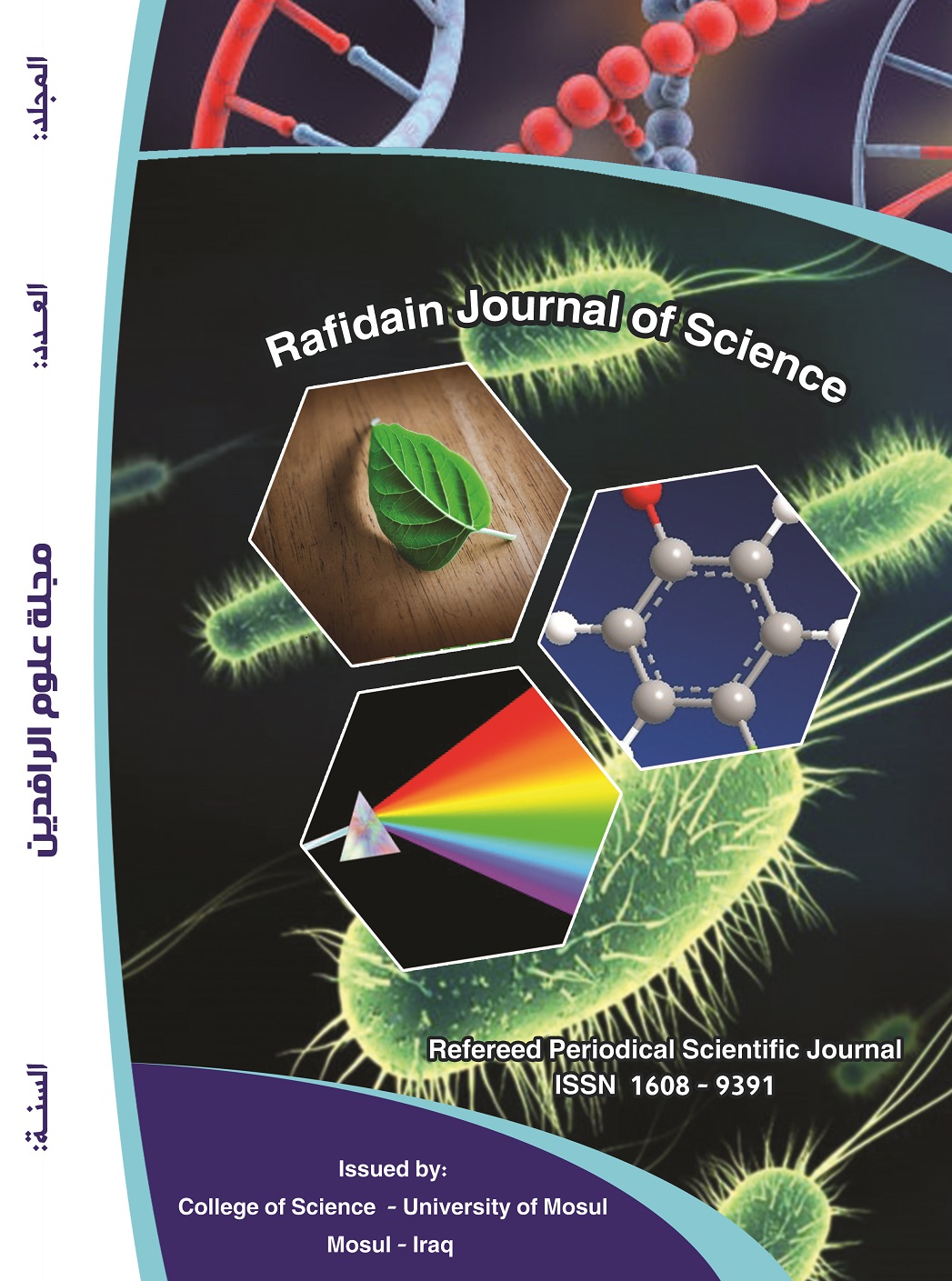Abstract
This paper highlighted a study on the use of bacteria as biological material for heavy metals removal from wastewater, using biomass of Bacillus spp. and Pseudomonas spp. in two time intervals (4, 24 hrs.) of biosorption process.The maximum capacity was found to be the highest for zinc by the two types of bacteria and two time intervals.While the minimum capacity was found for lead by pseudomonas spp.. The other metals have differed in the percentage uptake by two types of bacteria and two time intervals.
The study has found that there is an increase in uptake after 24 hrs. of biosorption process except the lead which its percentage of uptake has decreased after 24 hrs. by Bacillus spp. while the percentage of zinc for two types of bacteria has remained constant after 24 hrs. of biosorption.
As well as the research has studied the effect of addition of glucose on biosorption as an additional carbon and energy source and the results revealed that there is variation in bacterial ability for metal adsorption within the two intervals 4 and 24 hrs.
The study has found that there is an increase in uptake after 24 hrs. of biosorption process except the lead which its percentage of uptake has decreased after 24 hrs. by Bacillus spp. while the percentage of zinc for two types of bacteria has remained constant after 24 hrs. of biosorption.
As well as the research has studied the effect of addition of glucose on biosorption as an additional carbon and energy source and the results revealed that there is variation in bacterial ability for metal adsorption within the two intervals 4 and 24 hrs.
Keywords
Bacillus spp.
Biosorption
Metal uptake
Pseudomonas Spp.
wastewater
Abstract
ألقى هذا البحث الضوء على دراسة استخدام الجراثيم بوصفها مواداً حيوية لإزالة المعادن الثقيلة من مياه الفضلات، مستخدما الكتلة الحيوية لجرثومتي Bacillus spp.و Pseudomonas spp.وبفترتين زمنيتين 4 و 24 ساعة لعملية الامتصاص الحيوي.
وجد أن أعلى قدرة امتصاص كانت للزنك من الجرثومتين وبالفترتين الزمنيتين، وأقل قدرة امتصاص كانت للرصاص من جرثومة Pseudomonas spp..
أما المعادن الأخرى فقد تباينت في قدرتها على الامتصاص من الجرثومتين وللفترتين الزمنيتين. إذ توصلت الدراسة إلى أن هناك زيادة في الامتصاص بعد فترة 24 ساعة من عملية الامتصاص الحيوي ما عدا في حالة الرصاص التي كانت النسبة المئوية للامتصاص قد تناقصت بعد 24 ساعة من جرثومة Bacillus spp. ، فيما بقيت نسبة الامتصاص المئوية لمعدن الزنك ثابتة لكلا الجرثومتين بعد 24 ساعة من الامتصاص الحيوي.
استهدف البحث التحري عن قدرة جرثومتي spp. Bacillus و spp. Pseudomonas على إزالة بعض المعادن الثقيلة من مياه الفضلات ودراسة تأثير إضافة سكر الكلوكوز على هذه العملية بوصفه مصدرا إضافيا للكربون والطاقة وأظهرت النتائج تباينا في قدرة الجرثومتين على إزالة المعادن وفي كلا الفترتين 4 و 24ساعة.
وجد أن أعلى قدرة امتصاص كانت للزنك من الجرثومتين وبالفترتين الزمنيتين، وأقل قدرة امتصاص كانت للرصاص من جرثومة Pseudomonas spp..
أما المعادن الأخرى فقد تباينت في قدرتها على الامتصاص من الجرثومتين وللفترتين الزمنيتين. إذ توصلت الدراسة إلى أن هناك زيادة في الامتصاص بعد فترة 24 ساعة من عملية الامتصاص الحيوي ما عدا في حالة الرصاص التي كانت النسبة المئوية للامتصاص قد تناقصت بعد 24 ساعة من جرثومة Bacillus spp. ، فيما بقيت نسبة الامتصاص المئوية لمعدن الزنك ثابتة لكلا الجرثومتين بعد 24 ساعة من الامتصاص الحيوي.
استهدف البحث التحري عن قدرة جرثومتي spp. Bacillus و spp. Pseudomonas على إزالة بعض المعادن الثقيلة من مياه الفضلات ودراسة تأثير إضافة سكر الكلوكوز على هذه العملية بوصفه مصدرا إضافيا للكربون والطاقة وأظهرت النتائج تباينا في قدرة الجرثومتين على إزالة المعادن وفي كلا الفترتين 4 و 24ساعة.
